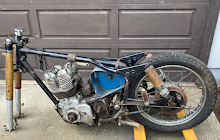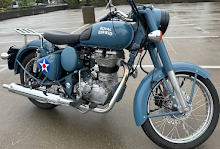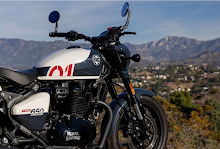Royal Enfield's 55 years of successfully making and selling motorcycles in India was bound to create fierce brand loyalty. I noted in a previous posting that Indians seem as excited as everyone else that a new Bullet 500 Classic will go on sale in 2009. However, all over the world, but particularly in India, the changes to the product were also bound to raise questions.
Is a Royal Enfield Bullet a Bullet if:
- The motor is not cast iron?
- There is no kick start?
- There is no carburetor?
- There is no right-side shift?
- There is no neutral finder?
- There is no separate transmission?
The short answer is that a Royal Enfield Bullet is anything Royal Enfield India says it is. Why should anyone care, particularly in India, where the decisions are made? One answer is that the changes may seem to be foisted on India for the sake of the small international market. Blogger Ujjwal Dey writes:
"Outside India due to various regulations AVL, lean burn and UCE and twinspark are the norm for export Enfields with the stupid left side gear shift. But India, the home and temple that idolises Enfields and particularly Bullets (cast iron is a Bullet, everything else are weird things imitating Bullets) too will see the demise of Bullets."
But, again, why should Dey care what new Bullets are like, since many thousands of vintage Bullets exist to satisfy his preferences? His answer:
"I don’t want to be some legend who is an exclusive owner of a classic bike, I want everyone to be able to buy and enjoy it."
That is the answer of a passionate fan. Passion never goes out of style. But, more to the point, Dey predicts that Royal Enfield, having given up its "legacy," will suffer in competition with other makes as they enter the Indian market. Since Indian customers, not the export market, make the vast majority of Royal Enfield purchases, they will decide the future.
Here in the United States, we remember that Harley-Davidson was once in the position of having let down its legend. The company returned to success by improving its product while retaining the appeal of its tradition. It may be that improved Royal Enfields will retain their legacy internationally if they continue to be accepted as "genuine" in their home market. Here again, Indians will decide the matter. We shall see.


























I read this with interest, as I am trying to decide whether or not to buy one of three Royal Enfields at my (not) local Royal Enfield dealer, each with a cast iron engine.
ReplyDeleteWhen I was an active if unintentional and unwilling mechanic back in the late Sixties we figured aluminum engines were a bad thing, just on general principles--I suppose cast iron is more stable--but now I'm trying to understand why, and ask the question, besides emissions, is cast iron indeed better?
Once upon a time (1970), I had a '67 HD Sportster, then a '67 Bonneville. I loved and had a ball on both bikes.
ReplyDeletelast year, I bought a brand new '07 Sportster, then traded it for a Triumph America (the cruiser-ized Bonnie). I loved the Sporty, and it felt just like years ago, only better. The same with the the Triumph. Progress happens. I'm sure there were die hards who bemoaned the loss of the Model T when the Model A came along.
My next purchase was going to be a Trioumph T100, but since seeing pics of the new RE, that's the bike I'm aiming for. Prior to that, I thought I might get a RE someday, but it wasn't a definite.